Mohini
Nectar of the Gods, or Ghee
Part of my series, 10 Recipes Inspired by 10 Hindu Goddesses.

Mohini appears in a gorgeous milestone story in the multitudinous sweep of Hindu mythology: the churning of the ocean, which appears in the Mahabharat.
As often occurs, there is a battle between deities and demons. The deities are sapped of their strength and energy from a curse, leaving them vulnerable to demon attack. So they turn to the supreme Vishnu, who concocts a devious plan. He convinces the demons and deities to put their battle on hold and work together to find amrita – the nectar of immortality — a potion that grants immense power to anyone who drinks it (like ambrosia! The similarity in the words is not a coincidence). It’s a trick against the demons. Vishnu assures the gods that only they will access the amrita.
Why do the demons agree to this plan? I can’t figure it out. Perhaps this tale is told to highlight the power of Vishnu. Perhaps it’s told to show that for goodness to prevail, one must work with, not against, one’s dark side.
The churning of the ocean
I started writing this newsletter during the summer, just prior to a coming thunderstorm. I saw a big wall of black cloud from my balcony. The air was thick and hot, like overcooked oatmeal, but then it started feeling lighter and cooler. There was that delicious electric charge in the air that happens before a big storm.
It must have felt like that times a billion when the demons and deities locked eyes across the ocean, reluctantly coming together to achieve a common goal — immunity, immortality.
Their plan: churn the ocean into a milky froth to find the amrita hidden deep. They uproot the mountain Mandara to use as the mixing rod. Birds, bugs, rabbits shriek in alarm. Roots tear from the ground and massive boulders crumble. The serpent-king Vasuki, king of the nagas, agrees to be the churning cord. Then, “the Asuras held the head of the snake and the Devas held its tail and they pulled his body alternately, causing the mountain to rotate and the ocean to churn.”
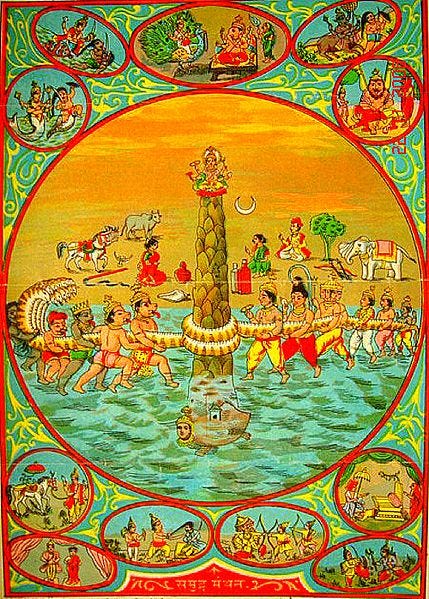
Vishnu oversees this epic collab and makes cameos. He manifests as a tortoise, Kurma, to act as a pivot for the mixing rod. With the gods sapped of their usual power, lots of questions hang tremulously in the air. A lot is riding on the back of a tortoise.
Mohini:
The goddess Mohini — and her sex appeal — enter at a crucial time.

Towards the end of this not-a-battle but also kind-of-a-battle, the demons capture the amrita for themselves. Vishnu, overseer of this great project, turns into the irresistible Mohini. Her beauty is such that she successfully seduces the amrita away from the demon, back to where it’s supposed to be.
I was charmed to read the different choices writers made to describe Mohini’s divine power. She is the ““Goddess of enchantment,” writes Alka Pade in The Print. The demons were “smitten by her beauty” writes Devdutt Pattanaik in Myth=Mithya.
My favorite description is found in this 1950 translation by G.V. Pagare:
“O blessed lady! Take this pitcher of Nectar and distribute it amongst us. We are the sons of Kaśyapa; O lady with beautiful buttocks, make us all drink it (Nectar)!”
Amrita
The earthly manifestation of this divine elixir is ghee. What else could it be? Ghee is a little touch of luxury in the daily churning of life. It plays a central role in Hindu ceremonies — a bridge to the divine. Butter extends the useful life of milk, and ghee extends the useful life of butter. Ghee is magic.

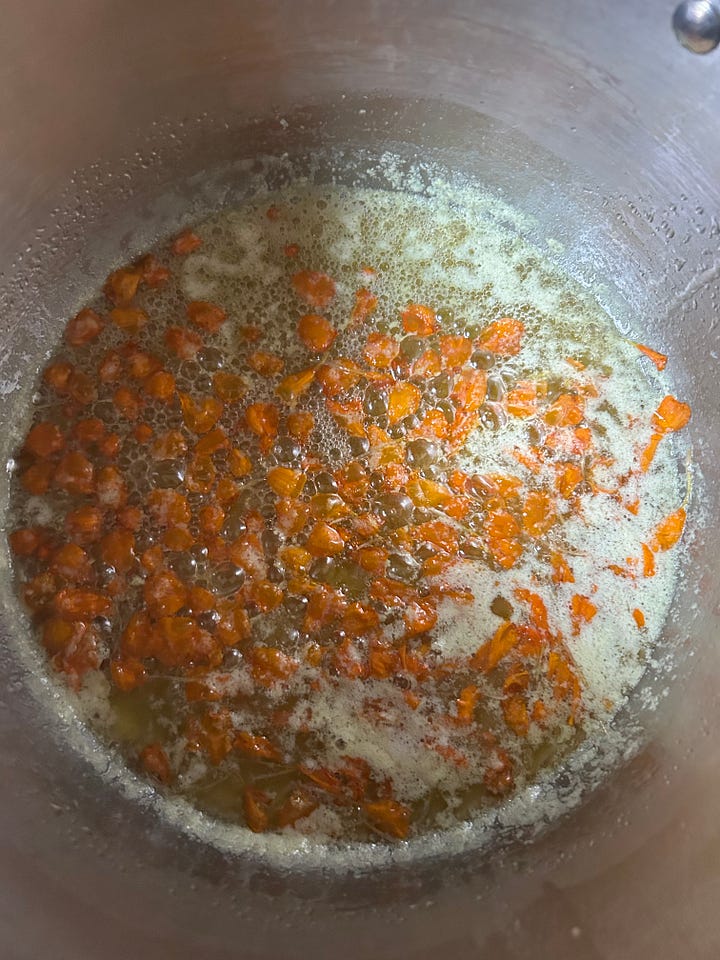
I followed my go-to cookbook, Julie Sanhi’s Classic Indian Cooking. Add two sticks of unsalted butter to a large pot, and slowly melt the sticks over low heat. Raise to medium-high heat and simmer the melted butter for about 10 minutes. Stop the heat when the frying sounds slow and you see the milk solids turn brown. Wait a few minutes to let the solids settle, then strain mixture into another container. I added a marigold to give the ghee a golden hue, worthy of the gods.
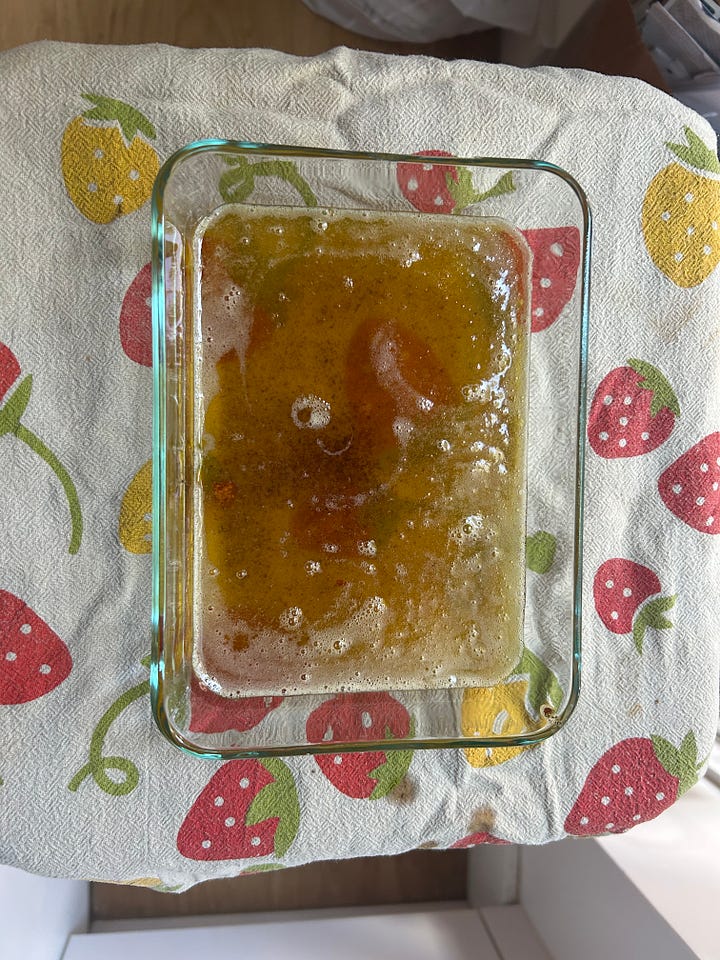
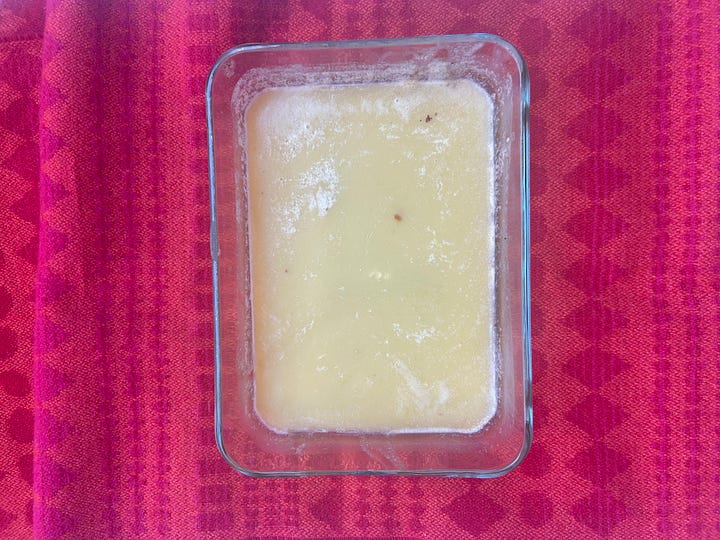
Before and after cooling. I think the marigold worked — the ghee looks like mango kulfi!
Newsfeed
If the personal and public health implications of Ozempic interest you, you’ll want to read this article by The Future Market, which outlines possible futures of the way we eat food as this drug mainstreams (or does not mainstream). Relatedly, I would like to see smaller portions and lower prices in restaurants. More affordable, healthier and less food waste. Seems like one of those elegant solutions we’ll never get because it doesn’t fit in with the private equity business model or whatever.
This Daily Show interview about venture capital is worth watching. I love Michael Kosta and I have World Eaters by the interviewee, Catherine Bracy, queued in the library.
Via Xinrou Shu, some Chinese women are “rewriting language” to erase misogyny baked into the language. Fascinating! I think the equivalent for American English would be to find an alternative term for “resting bitch face.” Or in one episode of Bob’s Burgers, I recall Linda saying “Danny Downer” instead of “Debbie Downer.”
Li’l Nubs:
I stopped by the Fashion Institute of Technology Museum to see their latest exhibit, “Dress, Dreams, and Desire: Fashion and Psychoanalysis.” I learned/recalled that Jung studied the collective unconsciousness of humanity, the shared pool of images and symbols that guide our thinking. One image in our collective unconscious: Jennifer Lopez’s infamous Grammy Dress, which is on display at the exhibit! Also on display was Elizabeth Hurley’s safety pin dress, do you remember that one?


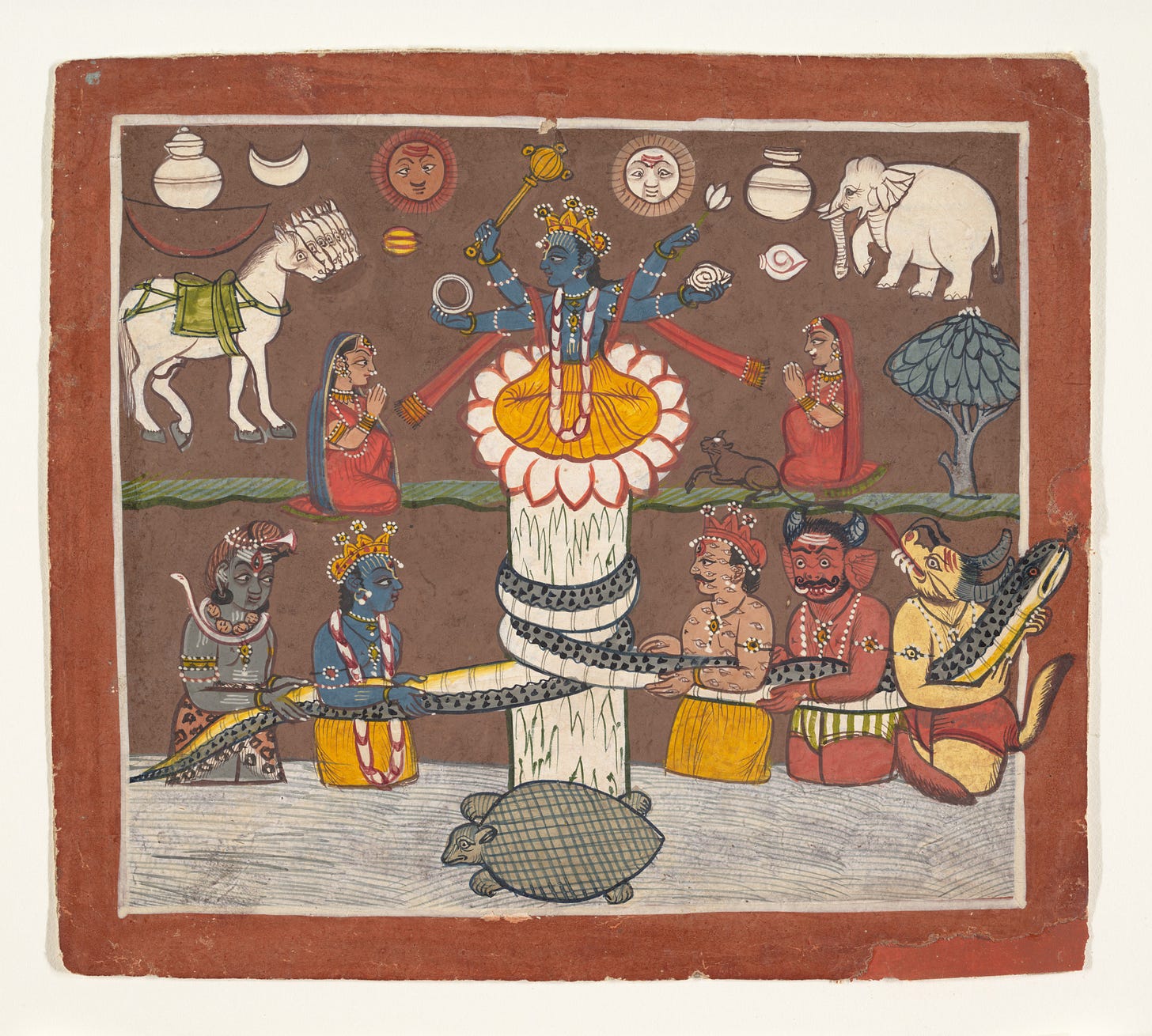
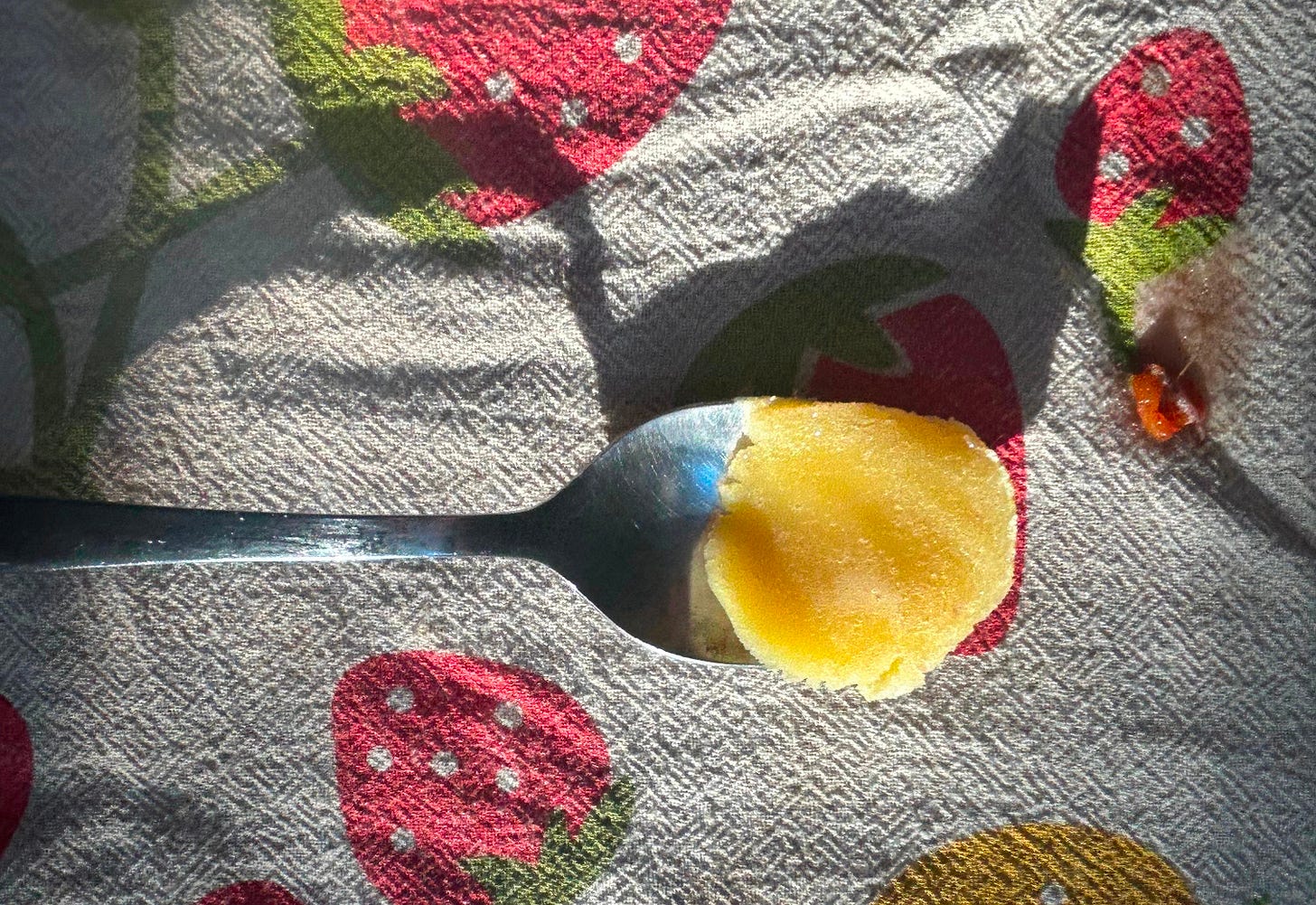

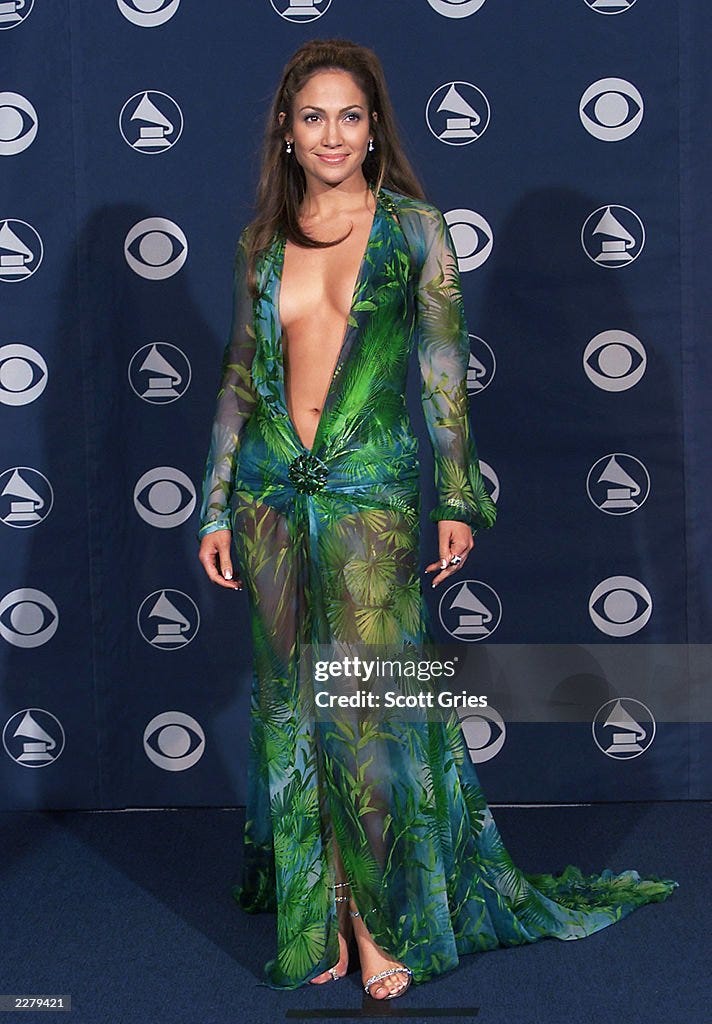

“The air was thick and hot, like overcooked oatmeal” is such a beautiful and apt description <3